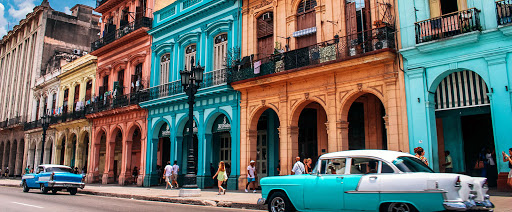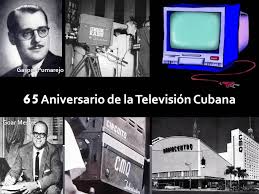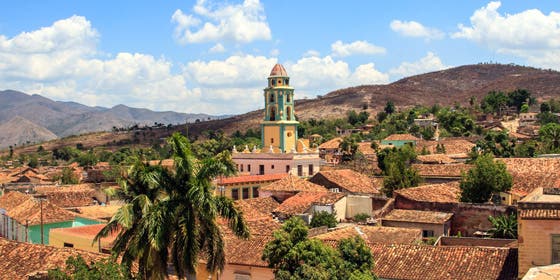 “EL CABARET REGALIAS” vs “JUEVES DE PARTAGAS” EN LA TELEVISIÓN CUBANA.
“EL CABARET REGALIAS” vs “JUEVES DE PARTAGAS” EN LA TELEVISIÓN CUBANA.
El programa más popular de la televisión cubana en la década de 1950 fue el “Cabaret Regalías”, que transmitía CMQ-Canal 6. Lo conducía, el actor Rolando Ochoa y lo patrocinaban los cigarros Regalías el Cuño. Cuando esa marca cigarrera dejó de pagar el espacio, en 1954, el programa, patrocinado entonces por los cigarros Edén, empezó a llamarse ‘Casino de la Alegría’ y siguió gozando del favor del público. Nada le arrebataba la teleaudiencia, ni la Escuela de Televisión, de Gaspar Pumarejo, que salía al aire por las noches a través de Tele Mundo-Canal 2, ni el béisbol televisado.
https://youtu.be/aPVGgjykx0Y
Escribe historiador Díaz Ayala que los miércoles, que era cuando se transmitía el programa, las entradas de las salas cinematográficas bajaban en un 40 por ciento, y en el interior del país, los pobladores que carecían de electricidad se movían hacia donde la hubiera para no perdérselo.
A este le pisaba los talones en cuanto a popularidad otro musical, “Jueves de Partagás”, que salía también por el 6 y animaba el gran actor Enrique Santiesteban. En su libro Televisión: ángel o demonio, Josefa Bracero expresa que en marzo de 1952, en la primera encuesta seria de la TV cubana, Cabaret Regalías se situó como el programa más visto, con más de 64 por ciento de teleaudiencia. Solo una vez Jueves de Partagás se le fue arriba y por poco margen.
Todavía en 1959, el ‘Casino de la Alegría’, con un 55,6 por ciento, encabezaba la lista de los 25 programas de mayor teleaudiencia. Le seguía ‘Jueves de Partagás’, con 46,5 por ciento. Venían detrás ‘Aquí todos hacen de todo’, que patrocinaba el detergente Ace y animaba Germán Pinelli; y los humorísticos Garrido y Piñero y El show de Pepe Biondi. Martes, miércoles y domingos de amor Palmolive alcanzaba un 34,5 por ciento, y el Noticiero CMQ de la noche aparecía en el número 20 de las preferencias.
‘ El Casino de la Alegría’ dejó de salir en 1961. Afirma Josefa Bracero que el 22 de febrero de ese año el Circuito CMQ y sus empresas, comenzaron a retirar sus anuncios comerciales y que el 27 de marzo siguiente fueron los funerales de la radio y la TV comercial en todo el país.
Entre el 12 de Enero de 1959 que fue intervenido El Circuito Nacional Cubano, con sus 12 emisoras nacionales siguió el Canal 12; el 23 de Febrero de 1960 le tocaba a Tele Mundo Canal 2 y el Canal 10 de Amadeo Barletta; el 25 de marzo llegaba su turno de intervención por parte del gobierno de los canales 4 y 7, que junto a los trabajadores del canal 2 se habían utilizado para exponer conflictos internos con los directivos de esas empresas para clausurarlas (AV).
En los próximos meses siguieron las intervenciones de las empresas promotoras de publicidad Sabatés y Crusellas que representaban a grandes monopolios norteamericanos, asi como la Procter and Gamble y Colgate, Palmolive, Peet. Estas, junto con la Publicitaria Siboney, cuyos dueños salieron del país, mantenían los mayores porcentajes de anuncios comerciales en CMQ Radio y TV. Cuyos trabajadores recibian sus sueldos de los anuncios comerciales proveniente de las publicitarias intervenidas. Solo Crusellas mantenía el 60 por ciento del tiempo al aire de la CMQ.
Ya Goar Mestre, el propietario principal de la CMQ, estaba fuera del país, y en septiembre de 1960 quedan confiscadas la CMQ y sus empresas. En este giro, Mestre era propietario de los canales 6 y 7 de la TV, de las radioemisoras CMQ, Radio Reloj, Radio Universal y la CMBF Radio Musical.
Poseía en verdad otras 20 empresas más, que iban desde un canal de TV en Argentina, la publicitaria Mestre Conill y fábricas productoras de chocolates, jugos y conservas de frutas, medicamentos, cosméticos y negocios dedicados a la venta de electrodomésticos y automóviles. Por no dejar de tener, era propietario de una fábrica de velas. En total tenía 23 firmas, valoradas en unos 15 millones de pesos equivalentes a dólares.
Dice Guillermo Jiménez en Los propietarios de Cuba; 1958, Goar Mestre fue «uno de los empresarios más exitosos, con más iniciativa y capacidad de gestión que tuvo Cuba».
El resto es Historia, que todos conocemos…..
 “EL CABARET REGALIAS” vs “JUEVES DE PARTAGAS” ON CUBA’S TELEVISION.
“EL CABARET REGALIAS” vs “JUEVES DE PARTAGAS” ON CUBA’S TELEVISION.
The most popular program on Cuban television in the 1950s was “Cabaret Regalías”, which was broadcast by CMQ-Channel 6. It was hosted by actor Rolando Ochoa and sponsored by Regalías el Cuño cigars. When that cigarette brand stopped paying for space, in 1954, the program, then sponsored by Edén cigars, began to be called ‘Casino de la Alegría’ and continued to enjoy the public’s favor. Nothing took away the television audience, not Gaspar Pumarejo’s School of Television, which aired at night on Tele Mundo-Channel 2, or televised baseball.
Historian Díaz Ayala writes that on Wednesdays, which was when the program was broadcast, movie theater tickets fell by 40 percent, and in the interior of the country, residents who lacked electricity moved to where there was no electricity miss it.
Another musical, “Jueves de Partagás”, which also came out on the 6th and was animated by the great actor Enrique Santiesteban, was on his heels in terms of popularity. In her book Television: angel or demon, Josefa Bracero states that in March 1952, in the first serious survey of Cuban TV, Cabaret Regalías ranked as the most-watched program, with more than 64 percent of viewership. Only once did Jueves de Partagás go up and narrowly.
Still, in 1959, the ‘Casino de la Alegría’, with 55.6 percent, topped the list of the 25 programs with the highest viewership. It was followed by ‘Jueves de Partagás’, with 46.5 percent. They came after ‘Everyone does everything here’, which sponsored Ace detergent and encouraged Germán Pinelli; and the humorous Garrido y Piñero and El show de Pepe Biondi. Tuesdays, Wednesdays, and Sundays of love Palmolive reached 34.5 percent, and the CMQ News of the night appeared in number 20 of the preferences.
‘El Casino de la Alegría’ stopped going out in 1961. Josefa Bracero affirms that on February 22 of that year the CMQ Circuit and its companies began to withdraw their commercial advertisements and that the following March 27 were the funerals of the radio and commercial TV throughout the country.
Between January 12, 1959, when the Cuban National Circuit was intervened, with its 12 national stations, Channel 12 followed; On February 23, 1960, it was the turn of Tele Mundo Channel 2 and Channel 10 of Amadeo Barletta; On March 25, it was their turn to intervene by the government of channels 4 and 7, which together with the workers of channel 2 had been used to expose internal conflicts with the directors of these companies to close them down (AV).
In the coming months, the interventions of the advertising promoters Sabatés and Crusellas that represented large North American monopolies, as well as Procter and Gamble and Colgate, Palmolive, Peet followed. These, together with Advertising Siboney, whose owners left the country, maintained the highest percentages of commercials on CMQ Radio and TV. Whose workers received their salaries from commercial advertisements from the intervened advertising companies. Only Crusellas kept 60 percent of the airtime of the CMQ.
Already Goar Mestre, the main owner of the CMQ, was out of the country, and in September 1960 the CMQ and its companies were confiscated. In this turn, Mestre was the owner of TV channels 6 and 7, radio stations CMQ, Radio Reloj, Radio Universal, and CMBF Radio Musical.
He actually owned another 20 companies, ranging from a TV channel in Argentina, the advertising Mestre Conill and factories producing chocolates, juices and fruit preserves, medicines, cosmetics, and businesses dedicated to the sale of electrical appliances and automobiles. By not ceasing to have, he owned a candle factory. In total, it had 23 firms, valued at about 15 million pesos equivalent to dollars.
It was, says Guillermo Jiménez in Los proprietors de Cuba; In 1958, Goar Mestre was “one of the most successful businessmen, with more initiative and management capacity than Cuba had.”
(AV) The rest is history, which we all know …..
Agencies/ Ciro Bianchi / Extractos/ Excerpts/ Internet Photos/ YouTube/ www.thecubanhistory.com
THE CUBAN HISTORY, HOLLYWOOD.












